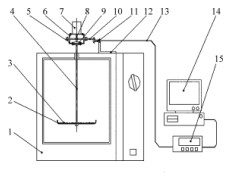
- Shandong Microwave Machinery Co.,Ltd.
- To be the Leader of microwave drying and edible oil refining equipments Manufacturer
Home> Company News> Microwave drying characteristics of wood
- AddressNo. 225, Huangqiao Village, Beiyuan, Tianqiao District, Jinan, Shandong, China
- Factory AddressNo. 225, Huangqiao Village, Beiyuan, Tianqiao District, Jinan, Shandong, China
- Phone(Working Time)+86 0531 85064681
- Phone(Nonworking Time)0086-15020017267
- Fax+ 86 0531 85064682
Microwave drying characteristics of wood
2018-10-25 14:33:55In this paper, the dielectric absorption power of wood microwave drying is derived from the RC model of wood microwave drying, and the drying mechanism is discussed from the perspective of spectroscopy, the temperature distribution is calculated, the existing problems in microwave drying are analyzed, and the solutions are put forward.
Keywords: microwave dryer
Because the microwave energy penetrates into the wood interior, after the microwave energy is absorbed by the wood, the "heat accumulation" occurs in the wood interior, forming the so-called "positive heat source" of the wood interior temperature higher than the surface layer, which is different from the ordinary drying process. This is the biggest characteristic of microwave wood drying.
So we can use microwave to dry special thick wood and special materials. However, microwave drying also has shortcomings. In order to ensure the quality of products, there are many technical problems to be further studied. The investment in drying equipment is too expensive, and the cost of electric energy consumption is too high. How to improve the economic efficiency needs further discussion.
The purpose of thoroughly discussing the mechanism of microwave wood drying and calculating the dielectric absorption power of microwave wood drying is to further understand the principle of microwave action on wood, to make full use of the advantages of microwave drying, and to solve the problem of economic benefit from the technology. This is very practical for the further development and application of this technology. Interestingly, wood has the same DC and AC dielectric properties as most organic materials and is an electrical insulator, but the insulation of wood depends on its moisture content.
All-dry wood is a good insulator, DC resistance at room temperature is about 1017 or 1012 cm, but its moisture content near the fiber saturation point, at room temperature conditions to 10 or 10592 cm. The higher the moisture content of wood, the smaller the resistivity will affect the direct current resistivity of wood is mainly water content, but also with the density of wood, texture direction and other factors.
Under the action of alternating current, the electrical properties of wood in the low frequency region are similar to those under the action of direct current. But in the high frequency region, the electrical properties are different. The dielectric absorption of wood is closely related to the frequency of alternating current and the relaxation time of molecules in wood. The polar molecules or polar groups in wood have their own relaxation time. When the period of high frequency alternating current and the relaxation time of molecule are equal, the wood has a great loss, that is, the dielectric absorption of wood reaches a maximum value. 2 The dielectric absorption power of wood is due to the action of direct current and low alternating current. The same electrical properties, that is, wood can be regarded as a pure resistive element, so the power consumed can be calculated directly from Joule's law.
 High efficiency food beverage factory stone paper production line
High efficiency food beverage factory stone paper production line Factory price Fully automatic Machine PP/PS Plastic Sheet Production Line
Factory price Fully automatic Machine PP/PS Plastic Sheet Production Line used deformered bar rolling mill production line
used deformered bar rolling mill production line Manufacturing plant automatic factory puffed sticky rice cracker production line
Manufacturing plant automatic factory puffed sticky rice cracker production line Production Line Pp Ppr Plastic Pipe Making Machine 20-63mm Multi-layer Extrusion Production Line For Water Supply
Production Line Pp Ppr Plastic Pipe Making Machine 20-63mm Multi-layer Extrusion Production Line For Water Supply